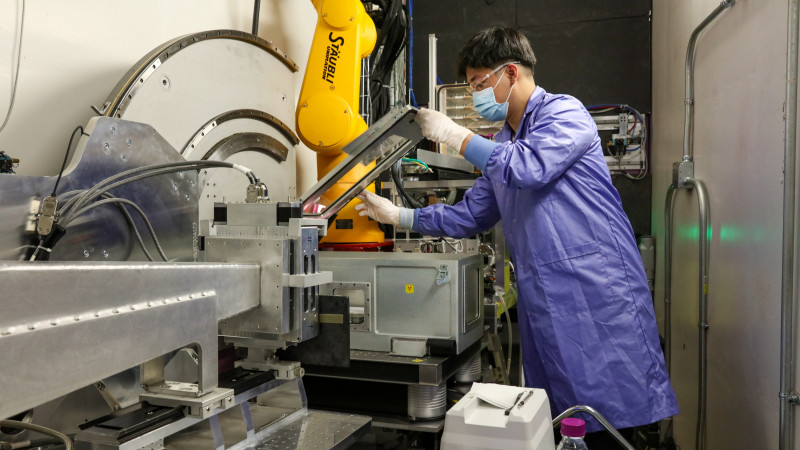July 27, 2020

Like veteran detectives investigating a crime scene, a team of expert biophysicists and neutron researchers has been called in to assist in a scientific case. Their task is to discover how the deadly SARS-CoV-2 coronavirus, after it breaks into a human cell, begins causing massive inflammation that leads to the most severe cases of COVID-19 infections. The investigation is being conducted at the Department of Energy’s Oak Ridge National Laboratory.
The offenders are known to be tiny envelope proteins (E-proteins) on the surfaces, or “envelopes,” of coronaviruses. After a virus enters a host cell, its E-protein invades the cell’s manufacturing centers — the endoplasmic reticulum and Golgi region — to enable the virus’s genetic material to make copies of itself and assemble new viruses. The E-protein then undergoes structural changes that break the cell membrane to release the newly formed viruses, which in turn proceed to invade other cells and make more copies.
Surviving a ‘Cytokine Storm’
This type of cellular home invasion is typical of viral infections, from a common cold to the seasonal flu. However, the E-protein of the SARS-CoV-2 virus has an ion channel and a PDZ-binding motif (a protein-protein recognition module central in cell signaling) that increase the permeability of the host cell membrane and trigger a “cytokine storm.” The resulting inflammation leads to significant fluid buildup in the lungs and, in some people, leads to swelling in other body tissues. This can turn what might otherwise resemble a common cold or flu into acute respiratory distress syndrome, which can result in breathing problems and multiple organ failure.
“Our experiments use neutrons to understand how the virus, particularly its E-protein, works in the cell membranes so we can find a way to control the associated inflammation,” said Minh Phan, postdoctoral research associate and principal investigator for the project. “If we can inhibit the E-protein, we may be able to reduce the amount of inflammation in a person’s lungs and other vital organs. That would help keep people out of intensive care, so our hospitals and medical professionals are not overwhelmed. Then more people with COVID-19 could successfully deal with the infection at home.”
Read more at neutrons.ornl.gov.